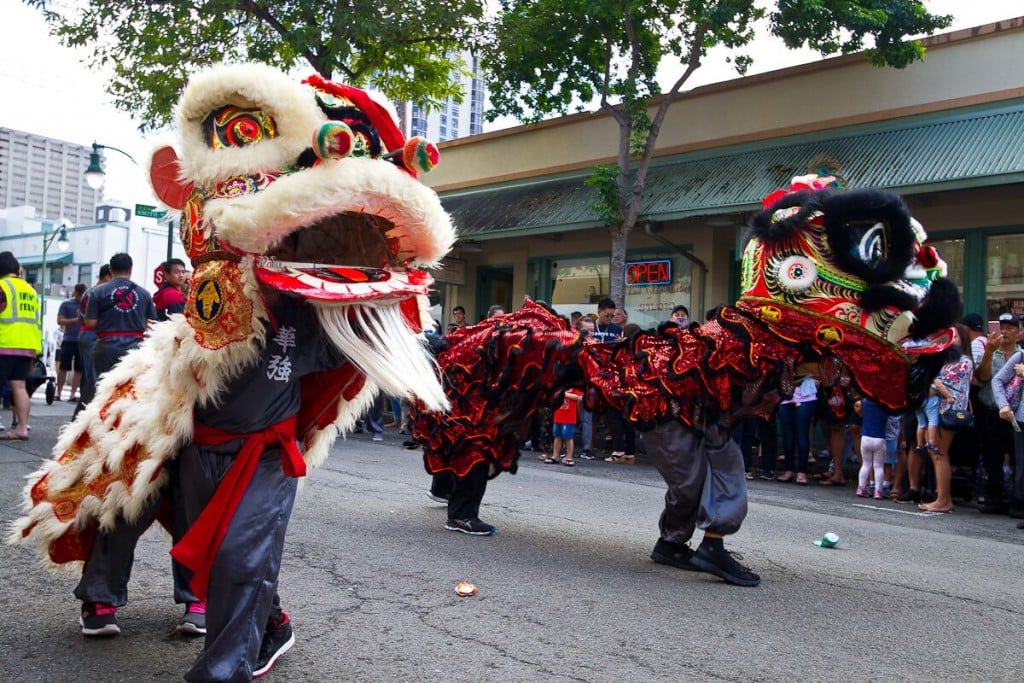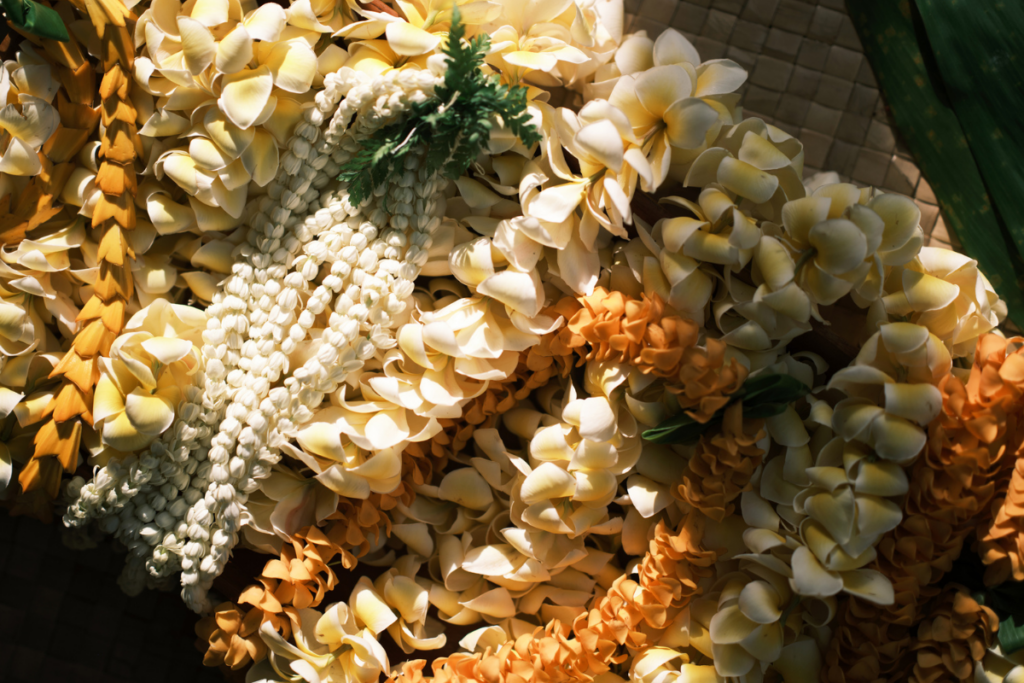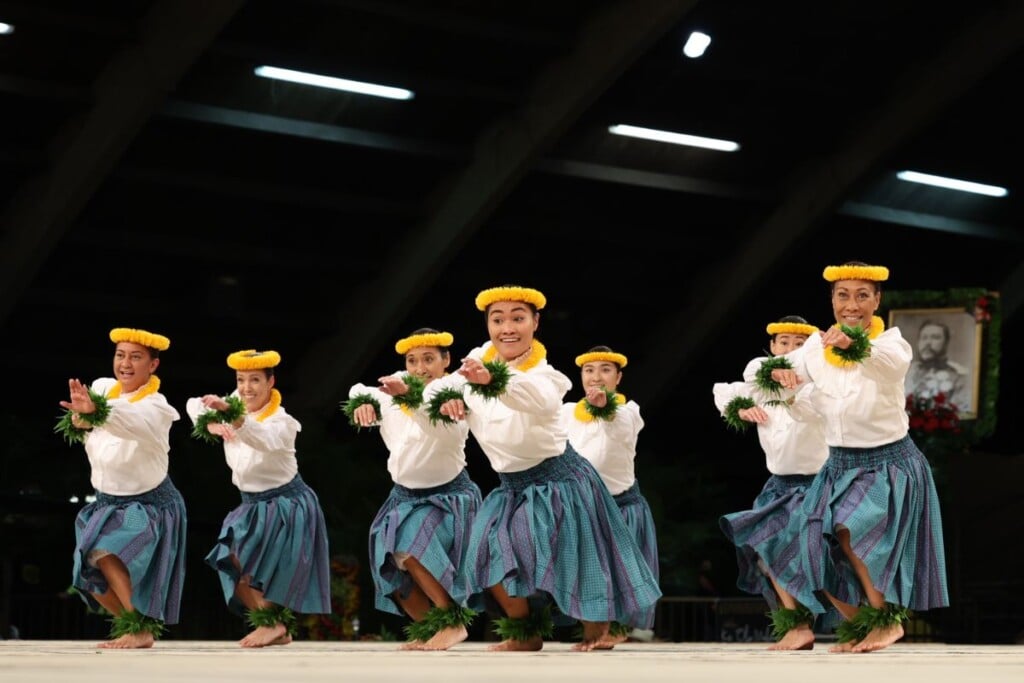7 Things You Might Not Know about the Chinese New Year’s Lion Dance
Turns out, there’s more to the lion dance than good fortune.

Chinese New Year’s is here, and in Hawaii that means a visit from our favorite, jubilant, sometimes scary Chinese lions. They dance through local businesses and schools with blessings of good luck and fortune for the new year and clearing out any unwanted spirits. However, there are a lot of small details that are easy to miss—and sometimes difficult to understand—when it comes to the traditional lion dance.
Fortunately, thanks to the help of Harlan Daitong Lee, head instructor of the Gee Yung Chinese Martial Arts and Dragon & Lion Dance Association, we can tell you what to look out for, what they mean, and what to do when you hear the frenetic thumping and extravagant motions of a lion dance.

1. Lettuce Offering
Actually, it doesn’t just have to be lettuce. What you’ll often find hanging from the doorway of a business or home can be any type of green produce, including lettuce or bok choy. After “eating” the green, the lion will spit it out, which may seem rude but actually represents the lion spreading wealth, prosperity and good luck. This, unfortunately, does not give you a good excuse to spit out your greens at the dinner table.
2. Three Bows
As a lion begins its dance, it will bow three times, each one representing heaven, earth and man. If there is a significant or notable person in the audience, the lion will also bow three times to that individual. Finally, after the dance is over, the lion will once again bow three times.
3. The Secret Behind the Biting
If you’ve ever attended a lion dance, you probably have seen—or experienced—a lion bite by-standers. Wrapping its large mouth over one of your limbs can be a fun, and somewhat frightening, experience. But what’s the secret meaning behind it? Well, there is none. It’s just the lion, or lion dancers, being playful, so laugh and scream all you want.
4. Is that a Mirror?
It is indeed. On the forehead of every lion is a mirror, or shield, which is used to repel negative energy, spirits (which disappear after looking into the mirror and seeing their own, frightening appearance) and evil. Other head ornamentation you may find on a lion is a horn, which is also used to fight evil, and a red ribbon, which signifies that the lion is “awake.” Lions without ribbons are deemed “asleep,” meaning they aren’t to be used in performances.
5. Pop, Bang, Crack
If you hear a loud, explosive crackle or pop during a lion dance, don’t be alarmed. It’s likely just a firework popping off, another tactic used to ward off evil spirits, which are apparently scared of loud noises.
6. Don’t Stop the Beat
Drums are also often associated with lion dancing, but did you know that drumming is the heart of the show—literally? The beat of the drum is meant to signify the heart of the lion, which will either grow more or less excited depending on how fervent the rhythm of the drum is. So, when you hear an increase in tempo, you know it’s time to pull out your smartphone and hit record.
7. More Than Just a Dance
Although lion dances just seem like a fun, wild spectacle, they really mean a lot to the martial arts schools and students who perform. The lion is a representation or figurehead of a martial arts academy, and the performance of a school’s lion dance also serves as an exhibiton of the martial arts school’s overall condition.


